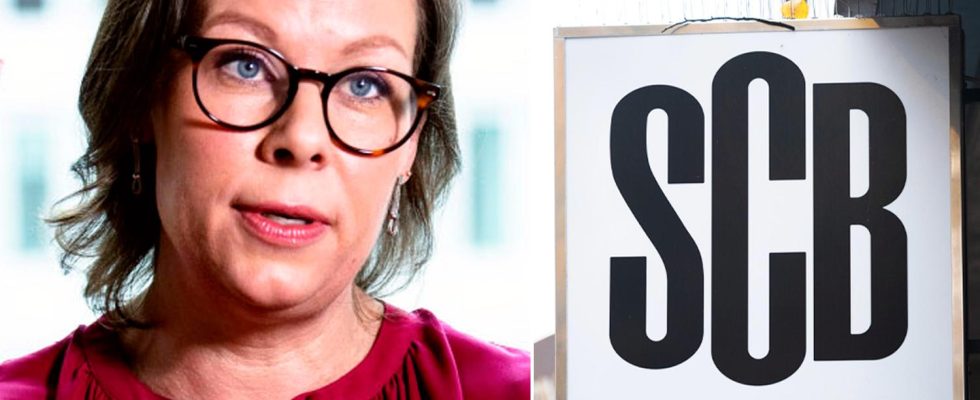Published: Less than 20 min ago
Updated: Just now
Now the government is rolling out its controversial “don’t come here” campaign.
In an article in the respected German newspaper Welt, the Minister of Migration states that more than half of the foreign-born in Sweden cannot support themselves, but the figure is disputed by experts.
– If you then interpret it as meaning that these people are completely dependent on contributions from the public sector, then that is not correct, says Karin Lundström, Statistics Sweden’s researcher.
The article which was published in the German Sunday newspaper Welt am Sonntag is part of the government’s attempt to launch the Swedish “paradigm shift” in the area of migration.
Last winter, Maria Malmer Stenergaad (M) promised at a press conference together with SD’s Henrik Vinge to “launch an international information campaign” that would overturn the image of Sweden as a generous refugee country.
Three months later, the campaign has resulted in:
Migration Minister Maria Malmer Stenergard does not want to confirm yet whether the campaign had the desired effect. But she points out that the number of asylum seekers to Sweden has decreased by 24 percent in 2022 and the first quarter of 2023, while it has increased in Europe.
– I think it is far too early to draw any conclusions. But we know that refugee smugglers and others are very well informed about the conditions and make sure to adapt their operations accordingly, she says.
Information in the campaign is, however, controversial – such as the claim about foreign-born Swedes that appears in the debate article in the German Welt am Sonntag. There she describes how higher requirements should be placed on immigrants, “unlike today where a majority of those born abroad do not support themselves here”.
According to Statistics Sweden’s, SCB’s, researchers, there are different ways of calculating the income of foreign-born people – but none of SCB’s methods lead to the conclusion that a majority of Swedes born abroad cannot support themselves.
– There are many different ways of counting and a few pitfalls if you see such a number straight away and it is not described properly what it is that you report, says Karin Lundström, a demographer at Statistics Sweden who does research on integration and the labor market.
– Then it is up to the reader to interpret, what does self-sufficiency mean? If you then interpret it as meaning that these people are completely dependent on contributions from the public sector, then that is not correct.
The number does not give the whole picture
According to Statistics Norway, 12 percent of the Swedish population, 700,000 people between the ages of 20 and 64, are supported by various social allowances and grants, such as livelihood support.
Maria Malmer Stenergard says that the figure in the German article taken from a report from the Entrepreneurship Forum foundation.
The researchers there looked at how much immigrants earned up to the year 2016.
The conclusion: a majority then had incomes below approximately SEK 200,000 a year.
But that also included students and those on parental leave. The figure did not take into account whether you had a partner, spouse or husband who had a higher salary. How it has looked after 2016, i.e. after the large wave of refugees, has not been investigated.
– I think they ended up with a little more than half, according to their method of calculation, not being considered self-sufficient. Then there has been that discussion in the election campaign not least, about how to count, says Maria Malmer Stenergard.
SCB: There is a positive trend
When Statistics Norway looked at similar figures last year, it was concluded that 46 percent of Swedes born abroad aged 20-64 earned below the limit of three basic income amounts, today around SEK 220,000 a year. For domestically born, the percentage was 25 percent.
– You can fall under that limit if, for example, you have not worked all year, or have part-time work with a relatively low salary, it is not a matter of being unemployed, says Karin Lundström, demographer at Statistics Sweden.
Overall, Statistics Norway’s figures show a positive trend – the proportion of people with zero income is decreasing, even among Swedes born abroad.
So the opposite of the spirit of the government’s campaign.
But the migration minister sees no reason to spread the more positive image in Germany.
– I think that few parts perceive that we would have come to terms with the exclusion in Sweden. I think the situation we have is incredibly serious, says Maria Malmer Stenergard.
Aren’t you spreading an unnecessarily pessimistic image?
– I think that the vast majority of people today see that our problems can be drawn in a rather dark color, which I think is our obligation to show, also vis-à-vis other countries. But we have a plan for how to reverse the trend. That’s a big part of this article too.
